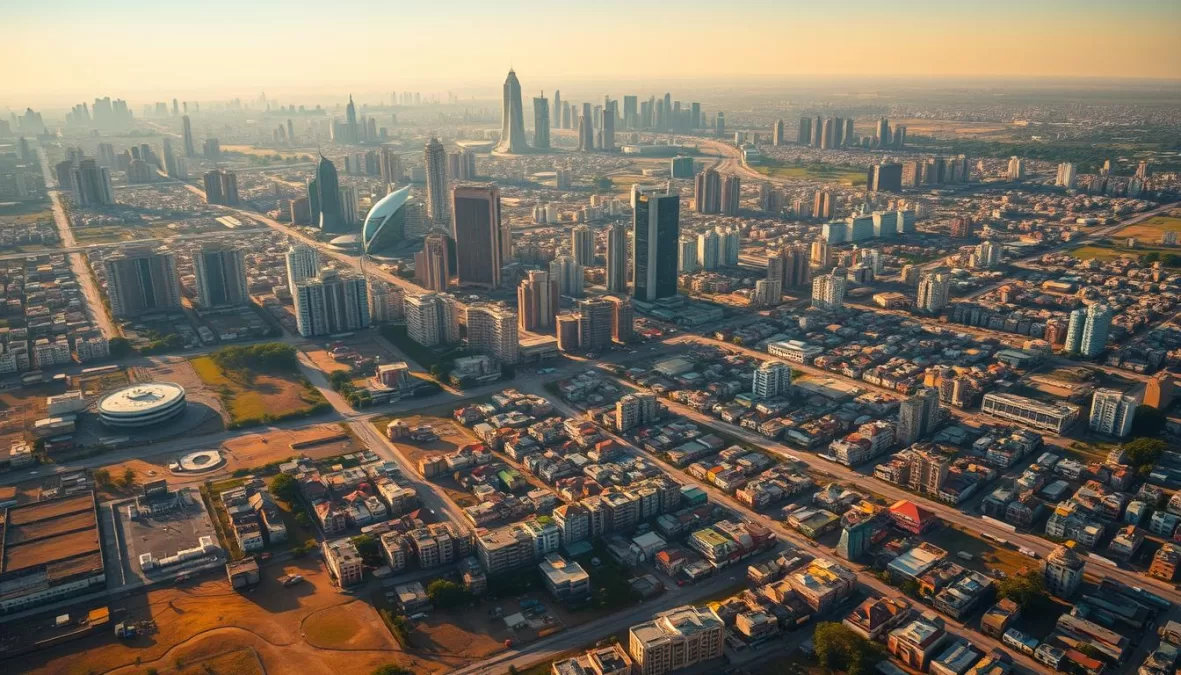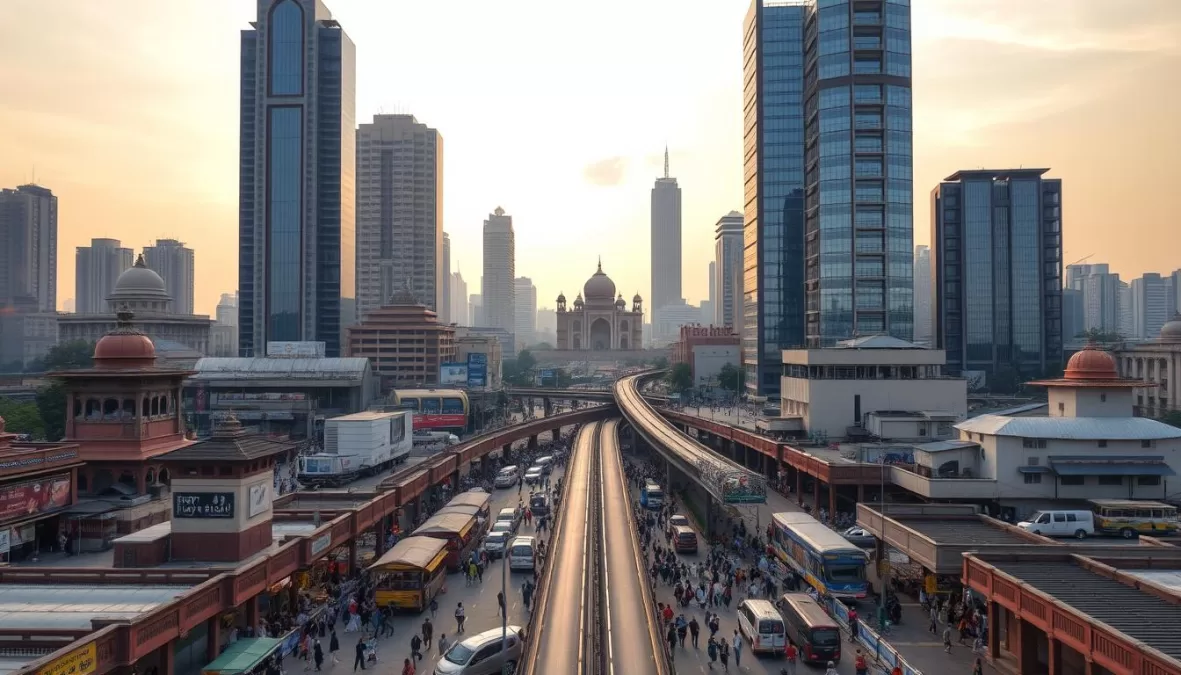India’s urban landscape is a complex tapestry reflecting the country’s economic, cultural, and demographic diversity. Cities are classified into tiers based on population size, infrastructure, and economic significance, a crucial factor for urban planning and business strategy.
Tier 1 cities form the backbone of India’s economy, contributing significantly to the country’s GDP. Characterized by high population density, diverse industries, and extensive infrastructure, these cities drive national growth and development. Understanding Tier 1 cities is essential for investors, homebuyers, and businesses looking to establish themselves in India’s most developed urban centers.
Key Takeaways
- Tier 1 cities are the economic hubs of India, driving national growth.
- These cities are characterized by high population density and extensive infrastructure.
- Understanding Tier 1 cities is crucial for investment and business decisions.
- Tier 1 cities offer diverse opportunities for businesses and homebuyers.
- They play a significant role in shaping India’s urban development.
Understanding the Classification of Cities in India
The Reserve Bank of India uses a tier classification system to categorize cities based on their population density and economic activity. This classification serves as a framework for assessing a city’s development level and growth potential.
What Defines a Tier1 City in India
Tier1 cities in India are the most developed metropolitan hubs with large populations, robust infrastructure, and substantial economic activity. To be classified as a Tier1 city, a city must have a population size of 1,00,000 and above. These cities are known for their global connectivity and are often home to multinational corporations, premier educational institutions, and advanced healthcare facilities, making them hubs for business and services.
The Importance of City Classification for Development
The classification of Indian cities into different tiers facilitates urban planning and infrastructure development. It serves as an indicator for assessing a city’s quality of life and social development, guides in evaluating a city’s economic potential, and helps government agencies prioritize infrastructure projects. This system is also valuable for businesses and investment, as it helps evaluate market potential and identify growth opportunities across India’s urban landscape.
As stated by a renowned urban planning expert, “The tier classification system is a crucial tool for urban development, as it provides a structured framework for assessing a city’s development level and growth potential.” This highlights the significance of city classification in guiding development strategies at both national and state levels.
Characteristics That Make Tier 1 Cities Stand Out
The backbone of India’s economy, Tier 1 cities exhibit unique features that contribute to their prominence. These cities are not just densely populated urban centers; they are also hubs of economic activity, innovation, and cultural diversity.
Population Density and Size
Tier 1 cities are characterized by their significant population density and size. With populations often exceeding a million, these cities create vibrant, dynamic environments that are conducive to business and innovation. For instance, cities like Mumbai and Delhi have populations that are among the highest in the country, contributing to their status as Tier 1 cities.
Economic Significance and Business Opportunities
These cities serve as economic powerhouses with diverse industries spanning IT, finance, manufacturing, healthcare, and retail sectors. The presence of diverse industries creates abundant business opportunities for entrepreneurs and corporations alike. For example, Bangalore’s booming IT industry has made it a hub for tech companies, while Mumbai’s financial sector drives the country’s economy.
| City | Key Industries |
|---|---|
| Bangalore | IT, Aerospace |
| Mumbai | Finance, Entertainment |
| Delhi | Retail, Manufacturing |
Infrastructure and Urban Amenities
The superior infrastructure found in Tier 1 cities includes advanced transportation networks, reliable utilities, modern office spaces, and comprehensive urban amenities that enhance quality of life. These cities attract talent from across the country and internationally due to their educational institutions, employment opportunities, and cosmopolitan lifestyle offerings. As a result, Tier 1 cities are often home to multinational corporations, premier educational institutions, and advanced healthcare facilities.
The Top 10 Tier 1 Cities in India: An Overview
India’s urban landscape is dominated by its top10 tier1 cities, which are the economic powerhouses driving the nation’s growth. These cities are spread across various states, including Maharashtra, National Capital Territory, Karnataka, Tamil Nadu, West Bengal, Telangana, and others.
The major tier1 cities in India include Mumbai, known as the financial capital with key industries in finance, entertainment, manufacturing, and IT; Delhi, the political and cultural center with key industries in government, real estate, and retail; and Bangalore, India’s Silicon Valley, with key industries in IT, aerospace, and biotech.
| City | State | Key Industries |
|---|---|---|
| Mumbai | Maharashtra | Finance, Entertainment, Manufacturing, IT |
| Delhi | National Capital Territory | Government, Real Estate, Retail |
| Bangalore | Karnataka | IT, Aerospace, Biotech |
| Chennai | Tamil Nadu | Automobile, IT, Healthcare |
| Kolkata | West Bengal | Jute, Steel, IT, Retail |
Other prominent tier1 cities include Chennai, known for its automotive and manufacturing industries; Kolkata, the cultural and commercial hub of eastern India; Hyderabad, a major IT and pharmaceutical hub; and Pune, renowned for its education and IT sectors.
These cities collectively contribute to the national economy, with diverse industrial landscapes that complement each other. The historical significance of these urban centers and their evolution over time have made them the economic powerhouses they are today.
Mumbai: The Financial Capital of India
Mumbai stands out as India’s financial capital, with the Reserve Bank of India and Bombay Stock Exchange. This status is further reinforced by the presence of numerous financial institutions that drive the nation’s economy. The city’s economic landscape is diverse, with key industries including finance, entertainment, manufacturing, and IT services.
Economic Significance and Key Industries
Mumbai’s economic significance is underscored by its major industries. The finance sector is a cornerstone, with institutions like the Reserve Bank of India and the Bombay Stock Exchange leading the nation’s financial activities. The entertainment industry, particularly Bollywood, also contributes substantially to the city’s economy, providing employment to millions. Additionally, manufacturing and IT services play crucial roles, with many businesses setting up operations in the city to leverage its robust infrastructure and connectivity.
Living in Mumbai: Pros and Challenges
Living in Mumbai offers numerous benefits, including unparalleled career opportunities and a vibrant cultural scene. The city’s cosmopolitan lifestyle attracts professionals from across India and beyond. However, it also comes with challenges such as a high cost of living, traffic congestion, and housing constraints. Despite these challenges, Mumbai remains a preferred destination for those seeking to be at the heart of India’s financial and entertainment industries.
Delhi: The Political and Cultural Hub
As India’s capital, Delhi is a melting pot of political power, cultural richness, and economic opportunity. It serves as the country’s administrative center, housing various government institutions and ministries.
Economic Sectors Driving Delhi’s Growth
Delhi’s economy is driven by three major sectors: government services, real estate, and retail. The government sector employs thousands in administrative roles, while the real estate market has seen a surge in high-end developments, particularly in areas like Gurgaon. The retail sector is also thriving, with a mix of traditional markets and modern shopping centers.
Some key statistics highlighting Delhi’s economic prowess include:
| Sector | Contribution to Economy |
|---|---|
| Government Services | Significant employment opportunities |
| Real Estate | Booming market with luxury developments |
| Retail | Diverse market with traditional and modern centers |
Infrastructure and Quality of Life
Delhi boasts impressive infrastructure, including an extensive metro system, international airport, and numerous educational institutions. However, the city also faces challenges like air pollution and traffic congestion, which impact the quality of life.
The quality of life in Delhi is characterized by its rich cultural heritage and diverse population. While there are challenges, the city’s infrastructure and amenities make it an attractive home for many.
Bangalore: India’s Silicon Valley
As India’s Silicon Valley, Bangalore has become synonymous with innovation and technological advancement. The city’s transformation over the past few decades has been remarkable, driven primarily by its booming IT sector.
IT, Aerospace, and Biotech Industries
Bangalore’s economy is powered by a diverse industrial ecosystem, with key industries including IT, aerospace, and biotech. The city is home to numerous multinational corporations and startups, making it an attractive destination for business and investment. Organizations like HAL have anchored the aerospace industry, while the biotech cluster is gaining global attention.
The IT sector remains the backbone of Bangalore’s economy, with many office spaces and tech parks dotting the city’s landscape. Post-pandemic, there has been a significant shift towards flexible office space, catering to the evolving needs of businesses.
Lifestyle and Urban Development
Bangalore offers a unique blend of cosmopolitan services and pleasant weather, making it an attractive home for young professionals and families. Despite challenges like traffic congestion, the city’s infrastructure is continually evolving to support its expanding population.
The city’s urban development patterns include the growth of integrated townships and infrastructure projects. Developers are prioritizing green buildings and smart home technologies, reflecting Bangalore’s position at the forefront of sustainable development in India.
| Industry | Key Features | Impact |
|---|---|---|
| IT | Multinational corporations, startups | Drives economy, creates jobs |
| Aerospace | Organizations like HAL | Contributes to national defense, innovation |
| Biotech | Emerging cluster | Attracts global investment, promotes healthcare innovation |
![]()
Other Prominent Tier 1 Cities Shaping India’s Future
As India’s economy continues to grow, Tier 1 cities beyond the usual suspects are becoming increasingly important for the country’s development. These cities are not only driving economic growth but also fostering innovation and urban development across various regions.
Chennai: The Automotive and Manufacturing Center
Chennai, located in Tamil Nadu, has established itself as a significant automotive and manufacturing hub. The presence of major automobile companies has shaped the city’s economy, creating a robust supply chain ecosystem. This has not only influenced urban development patterns but also contributed to the growth of related industries such as logistics and services.
The city’s automotive sector is complemented by a thriving IT industry, making Chennai a diverse economic landscape. With key industries in automobile manufacturing, IT, and healthcare, Chennai is poised for continued growth and investment.
Kolkata: The Cultural Hub of Eastern India
Kolkata, the capital of West Bengal, is renowned for its rich cultural heritage and intellectual traditions. Beyond its cultural significance, Kolkata has an evolving economic landscape that blends traditional industries like jute and steel with modern sectors such as IT and retail.
The city’s unique character is preserved while adapting to contemporary economic opportunities. Kolkata’s cultural and commercial significance makes it a vital Tier 1 city in Eastern India, contributing to the region’s economic growth and urban development.
Hyderabad: IT and Pharmaceutical Powerhouse
Hyderabad, known for its IT and pharmaceutical industries, has experienced remarkable growth in recent years. Policy initiatives, infrastructure development, and educational institutions have created a thriving ecosystem for these knowledge-intensive industries.
The city’s technology and real estate sectors are booming, making Hyderabad a major hub for business and investment. With its strong focus on IT and pharmaceuticals, Hyderabad continues to attract investment and drive economic growth.
Pune: Education and Automobile Industry Leader
Pune, located in Maharashtra, is recognized for its prestigious educational institutions and thriving IT sector. The city is also a significant player in the automobile industry, with several major manufacturers having a presence there.
The combination of education and industry has created a synergistic effect, driving Pune’s economic growth and urban expansion. Pune’s dual identity as an educational center and an industrial hub makes it a unique and important Tier 1 city.
| City | Key Industries | State |
|---|---|---|
| Chennai | Automobile, IT, Healthcare | Tamil Nadu |
| Kolkata | Jute, Steel, IT, Retail | West Bengal |
| Hyderabad | IT, Pharmaceuticals, Real Estate | Telangana |
| Pune | Automobile, IT, Education | Maharashtra |
These four cities represent different development models within India’s urban landscape, each leveraging their unique historical strengths while adapting to contemporary economic opportunities and challenges. As India continues to urbanize, the growth and development of these Tier 1 cities will play a crucial role in shaping the country’s future.
Comparing Tier 1 Cities with Tier 2 and Tier 3 Cities
As India’s economy grows, understanding the distinctions between Tier 1, Tier 2, and Tier 3 cities becomes crucial for investors and homebuyers alike. The differences in affordability, cost of living, and investment potential across these city tiers are significant.
Affordability and Cost of Living
Tier 1 cities like Mumbai and Delhi have high property prices and rental costs, making housing affordability a major concern. In contrast, Tier 2 cities such as Jaipur and Lucknow offer more affordable options. Everyday living expenses, including food, transportation, and education, also vary across city tiers, influencing the overall cost of living.

Investment Potential and Return on Investment
Tier 1 cities typically offer stable but slower appreciation in property value. Tier 2 cities, however, present high potential for long-term gains due to rapid development and infrastructure growth. Investors should consider these factors when choosing between Tier 1, Tier 2, and Tier 3 cities for their investments.
Conclusion: The Future of Urban Development in India’s Tier 1 Cities
The future of India’s urban development is intricately linked with the growth of its Tier1 cities, which are poised to drive economic growth and innovation.
With limited land availability, redevelopment and vertical expansion will continue to dominate, while smart technologies and green building practices will further shape the market.
As Tier1 cities evolve, they will increasingly focus on sustainability, with a growing emphasis on renewable energy and environmental remediation.
This shift will create new opportunities for investors and businesses, while enhancing the quality of life for residents in these dynamic metropolitan areas.





